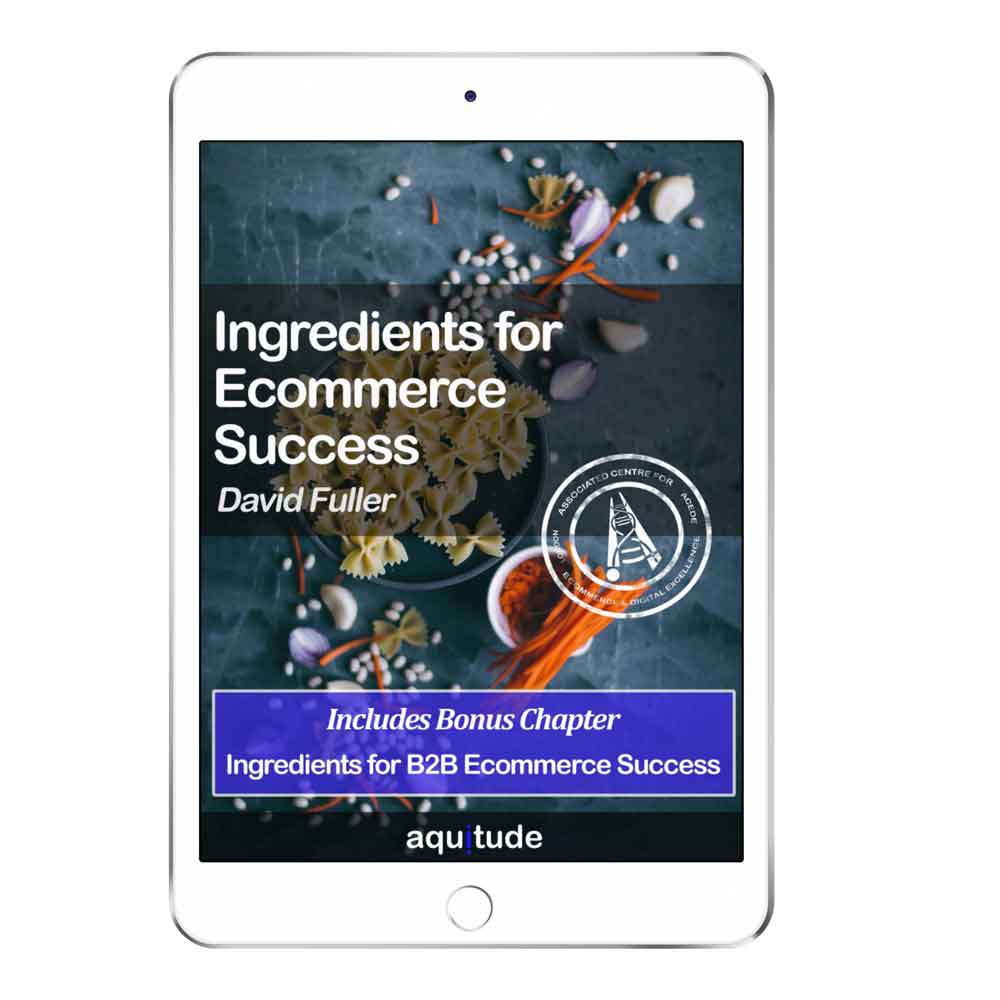
B2B buyers are consumers too. When not at work, they buy from slick, optimised B2C ecommerce sites with advanced search functionality, the ability to configure products and get recommendations based on user data.
Why should B2B ecommerce sites be any different?
There are a few differences between B2C and B2B websites. Payment methods, transaction frequency and volume, product types. But all of these pieces of the puzzle depend on specific user journeys or stories, and they are changed by the type of user.
The following is an excerpt from the bonus chapter in my book – ‘Ingredients for Ecommerce Success’. It is available exclusively from Aquitude.com.
Customer Relationship Management meets Ecommerce.
Many consumer businesses have adopted Customer Relationship Management (CRM) tools developed for B2B companies – because understanding the different buyers and buyer types is key to online sales success.
Before customer data collection was automated and ‘weaponised’, sales teams would know key information about prospects and clients, gathered through building relationships on phone calls, site visits or the golf course!
Sales might not have called them Buyer Personas, but there would be an understanding of roles within a prospect account, from the intern doing research to the influential rising-star to the CEO or ultimate purchasing decision maker.
B2B sales usually involves more than one buyer, which is why Account Based Marketing has become so popular and successful.
The initial research and shortlisting might be done by someone more junior. There may be multiple stakeholders – the users of your product or service might not be the people buying it. The ultimate purchase decision may require board approval or sign off from the CFO.
B2B Ecommerce needs to take into account all of these buyer personas or types who might all be from the same account.
This is where integration with other systems like your CRM or Digital Experience (CMS) tools is important. Being able to recognise different visitors to your ecommerce platform, presenting them different information and managing what each can or can’t do.
Some basic considerations:
- Do you show prices to everyone or does a user have to be logged in?
- Do different customers get different prices?
- Are product sheets ‘gated’ behind a data capture form?
- Is a user limited in the ability to place an order based on the value of the order?
- Can an order be created by one user and ‘executed’ by another?
- Can a ‘professional buyer’ who knows your product list by catalog number place an order without having to navigate to every product detail page one by one?
- Where is your buyer making the purchase? Are they on a building site with a company issued mobile phone or are they sitting behind a 21 inch screen?
If you skip this process, when it comes to making a platform decision, you can find yourself missing a whole bunch of functionality that you might need.

Book: Ingredients for B2B Ecommerce Success, by David Fuller
Exclusive to Aquitude – This version of ‘Ingredients for Ecommerce Success’ features a BONUS CHAPTER – the Ingredients for B2B Ecommerce Success.
B2B Ecommerce is growing quickly and there are different approaches and resources required to deliver a B2B ecommerce project. 10% more content – specially edited for B2B companies looking to create an online selling channel.